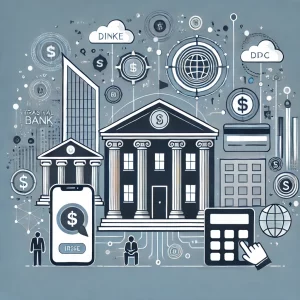The Role of Blockchain in Global Trade Finance

Global trade finance is the lifeblood of international commerce, providing the essential infrastructure for companies to conduct transactions across borders. It encompasses a range of financial instruments like letters of credit, bank guarantees, and trade loans, which help mitigate the risks involved in international trade. However, the traditional trade finance system is often inefficient, slow, and prone to fraud due to its reliance on paper-based documentation and multiple intermediaries.
Blockchain technology has emerged as a game-changing innovation in global trade finance, offering a decentralized, secure, and transparent platform that can streamline processes, reduce costs, and enhance trust between trading partners. In this article, we’ll explore how blockchain is transforming global trade finance, its key benefits, challenges, and future potential.
The Challenges in Traditional Global Trade Finance
Global trade finance has long been riddled with inefficiencies and complexities. Some of the key challenges include:
- Paperwork and Documentation: Traditional trade finance relies heavily on physical paperwork such as bills of lading, letters of credit, and invoices. These documents must be exchanged between various parties, leading to delays, errors, and increased costs.
- Fraud and Lack of Transparency: The involvement of multiple intermediaries (banks, shipping companies, insurance providers, etc.) creates opportunities for fraud and manipulation. This lack of transparency makes it difficult for stakeholders to track and verify the authenticity of transactions.
- Slow Processing Times: International trade transactions can take weeks or even months to complete due to the manual processes involved in verifying documentation, securing approvals, and transferring funds.
- High Costs: The complexity and fragmentation of global trade finance lead to high transaction costs, including fees for banks and intermediaries. Small and medium-sized enterprises (SMEs) often face challenges accessing trade finance due to these high costs.
How Blockchain is Transforming Global Trade Finance
Blockchain offers a potential solution to many of the challenges in global trade finance by providing a secure, decentralized, and transparent ledger system that can digitize and automate trade finance processes. Here are some of the key ways blockchain is reshaping the industry:
1. Increased Transparency and Trust
One of blockchain’s most significant advantages is its ability to create a transparent, immutable ledger of transactions. Every transaction recorded on a blockchain is verified by multiple participants in the network and cannot be altered or deleted. This creates a single, shared version of the truth that all parties involved in a trade can access.
In global trade finance, this level of transparency helps reduce fraud by ensuring that all participants have real-time visibility into the status of a transaction. Blockchain can track the movement of goods, verify the authenticity of documents, and ensure that all required approvals are in place before a transaction is completed. This increased transparency builds trust between buyers, sellers, banks, and other stakeholders.
Example: A blockchain-based platform can provide real-time tracking of a shipment, allowing both the buyer and seller to verify that the goods have been dispatched, shipped, and delivered. This eliminates the need for manual tracking and reduces the risk of disputes.
2. Faster and More Efficient Transactions
Blockchain streamlines the trade finance process by digitizing and automating many of the manual tasks involved in traditional trade finance. Smart contracts, which are self-executing contracts with terms directly written into code, play a crucial role in automating trade transactions on blockchain platforms.
Smart contracts can automatically trigger payments, release shipments, or update records once certain conditions are met. This eliminates the need for intermediaries and reduces the time it takes to process transactions. For example, a letter of credit issued on a blockchain platform could be executed automatically once the buyer confirms receipt of goods, significantly speeding up the payment process.
Benefits of blockchain-driven efficiency:
- Reduced delays: With blockchain, transactions that traditionally take days or weeks to complete can be processed in real-time, reducing delays in shipping and payments.
- Lower costs: Automating the trade finance process reduces the need for intermediaries and paperwork, leading to lower transaction costs.
3. Enhanced Security
Blockchain technology uses cryptographic techniques to secure transactions, making it highly resistant to tampering or hacking. In global trade finance, this provides an additional layer of security for sensitive documents such as letters of credit, bills of lading, and trade contracts.
Additionally, blockchain’s decentralized nature means that there is no single point of failure. Transactions are recorded on a distributed ledger that is replicated across multiple nodes, ensuring that even if one part of the network is compromised, the overall system remains secure. This helps protect against cyberattacks and reduces the risk of fraud.
4. Improved Access to Trade Finance for SMEs
Small and medium-sized enterprises (SMEs) often face difficulties in accessing trade finance due to the high costs and complexity of traditional banking systems. Blockchain can help level the playing field by reducing barriers to entry for smaller businesses.
By using blockchain-based trade finance platforms, SMEs can gain access to a more affordable and efficient system for securing trade finance. Blockchain can also help reduce the need for collateral by providing a more transparent record of the transaction history, making it easier for SMEs to prove their creditworthiness.
Example: Platforms like We.Trade and Marco Polo are leveraging blockchain technology to provide SMEs with access to trade finance services that are faster, cheaper, and more transparent than traditional systems.
5. Trade Asset Digitization
Blockchain can also enable the digitization of trade assets, such as bills of lading, invoices, and trade receivables. By converting these assets into digital tokens, blockchain allows them to be traded or transferred more easily and securely.
Tokenizing trade assets on a blockchain platform can improve liquidity in the global trade finance market by enabling quicker transfers and settlement of trade receivables. It also opens up new opportunities for secondary markets, where trade receivables can be bought and sold in real time, increasing the efficiency of global trade finance.
Examples of Blockchain in Global Trade Finance
Several blockchain platforms and initiatives have been developed to address the challenges in global trade finance. Some of the most notable examples include:
- We.Trade: A blockchain-based trade finance platform backed by major European banks, We.Trade aims to simplify trade finance for SMEs. The platform uses smart contracts to automate the execution of trade agreements, enabling faster and more secure transactions.
- Marco Polo: A blockchain platform designed to streamline supply chain and trade finance processes. Marco Polo provides real-time visibility into trade transactions and allows for the digitization of trade documents, reducing the need for manual intervention.
- IBM Food Trust: While focused on supply chain transparency, IBM Food Trust uses blockchain to track the journey of food products from farm to table. The platform ensures that all stakeholders in the supply chain have access to real-time information, which can be extended to trade finance applications.
- TradeLens: Developed by IBM and Maersk, TradeLens is a blockchain-based platform that digitizes global shipping and logistics, providing real-time visibility into the movement of goods across borders. TradeLens aims to reduce paperwork, improve efficiency, and enhance collaboration among participants in the global supply chain.
Challenges to Blockchain Adoption in Global Trade Finance
While blockchain offers significant benefits to global trade finance, its widespread adoption faces several challenges:
- Regulatory Uncertainty: The legal and regulatory frameworks surrounding blockchain and cryptocurrencies vary significantly across countries. This uncertainty creates challenges for the adoption of blockchain-based trade finance solutions, particularly in highly regulated industries like finance and international trade.
- Interoperability: Global trade involves numerous parties, including banks, logistics companies, regulators, and customs authorities. For blockchain to be truly effective, there must be interoperability between different blockchain platforms and existing legacy systems.
- Scalability: Blockchain networks can face scalability issues when processing a large volume of transactions. As global trade involves billions of transactions, ensuring that blockchain platforms can scale efficiently is a critical challenge.
- Awareness and Adoption: Despite the potential of blockchain, many businesses and financial institutions are still unfamiliar with the technology or hesitant to adopt it. Building awareness and demonstrating the benefits of blockchain will be key to its widespread adoption in trade finance.
The Future of Blockchain in Global Trade Finance
Despite the challenges, the potential for blockchain to transform global trade finance is immense. As more businesses, financial institutions, and governments recognize the benefits of blockchain, we can expect to see increased adoption and integration of the technology in the coming years.
In the future, blockchain could become the standard for processing and settling trade finance transactions, enabling a fully digitized and automated global trade ecosystem. As blockchain technology evolves and becomes more scalable, it will play an increasingly important role in making global trade faster, more efficient, and more secure.
Conclusion
Blockchain technology is poised to revolutionize global trade finance by addressing many of the challenges associated with traditional systems. From increased transparency and faster transactions to enhanced security and improved access for SMEs, blockchain offers a wide range of benefits that can streamline and modernize the global trade finance industry.
While there are still challenges to overcome, such as regulatory uncertainty and interoperability, the potential of blockchain to reshape global trade finance is undeniable. As the technology continues to mature, we can expect to see blockchain become an integral part of the future of international commerce, unlocking new opportunities for businesses and economies around the world.




